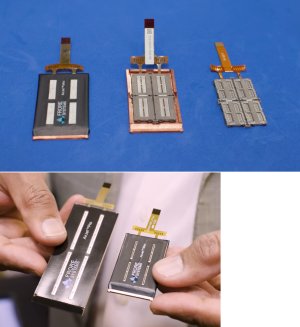Something fishy about this, like half snake oil.
After watching the video I also saw another, here:
There they are pretending that a chassis 'sunk CPU could only run at 2.5W which is absurd. I know, not really, instead they didn't want to compare that, just one designed for this cooling method but with it unplugged, which is craziness. Take ANY cooling designed for airflow and stop the airflow and yeah, same result.
It also strikes me as strange that this cooling requires a dust-proof membrane, which I'm sure it would to keep dust from clogging the smaller passageways, but then this dust proof membrane itself will clog up all that much faster, so it looks like a tech that works in a dust free lab for a period long enough to do a test only, as long as you're testing but not so much in the real world where there is dust.
Doesn't really make sense in the video I saw,
that you can use a heatsink without those expensive active cooling chips, merely make the heatsink that amount taller with fins to accomplish the same at lower cost.
Obviously anyone could rig up a way it only stays cool enough with the active chip cooling it. Thing is, nobody would design it that way, instead design for normal cooling. In one video he stated it weighed less... ??? What do I care if my microPC weighs a few ounces more? When is this even relevant unless I have it in a solar powered RC/passive-code-instructed scale airplane?
If the race is to make it ever smaller, no matter cost or longevity, then I see it as a fail, much like moving to mUSB, mHDMI, etc. I could see it for portable devices except that ultimately the trend there is going to be using as client with host or intermediary processing.
Regardless, thanks for providing this topic, it is interesting even if I don't buy it and think it's more of a niche tech being misapplied in the examples I saw.





